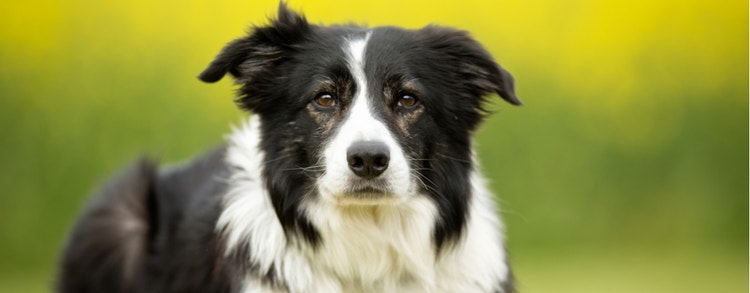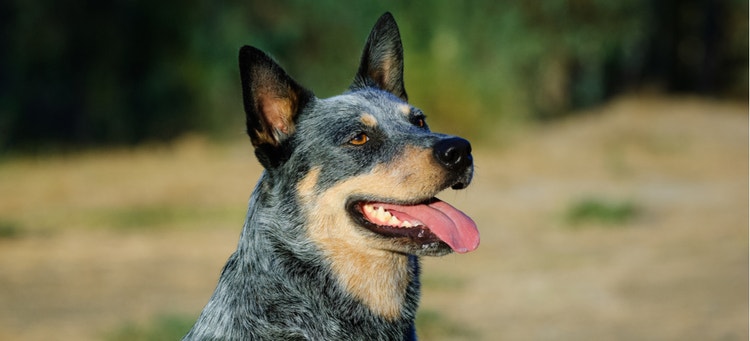
Australian Cattle Dog
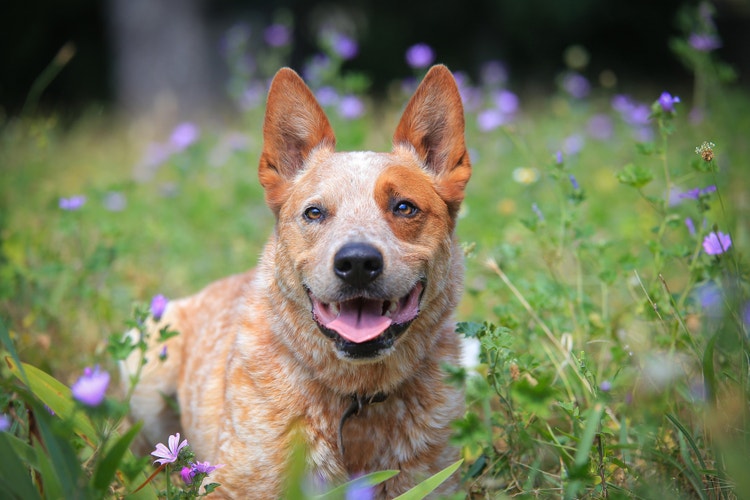
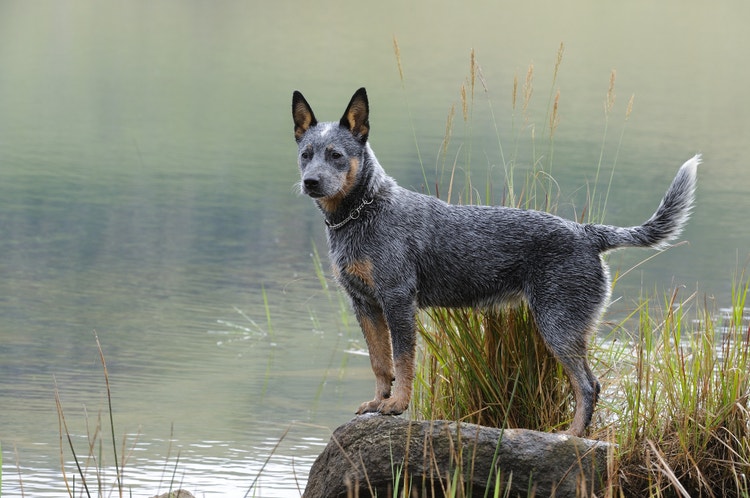
How Was the Australian Cattle Dog Created?
The Australian Cattle Dog is the result of crossbreeding that began around 1840 by several different Australian landowners. Their goal was to create a breed that could silently and effectively herd wild cattle. One landowner, Thomas Hall, crossed a smooth-haired Blue Merle Border Collie with a Dingo. The resulting dog breed possessed the work ethic of the Collie and the appearance of the Dingo, acquiring the title “Hall’s Heelers” and becoming a prized possession among Aussie cattlemen.
Breeders in Queensland furthered the experiment, breeding Dingo/Merle Collie hybrids with Dalmatians, sheepdogs, and Kelpies. The resulting breed is the one known today, possessing the characteristic blue or red speckled body, tan markings, dark eye patches, and white foreheads.
The breed entered the American Kennel Club Stud Book in 1980 as a working breed and moved to the Herding Group 3 years later.
Caring for an Australian Cattle Dog
What Kind of Diet Does an Australian Cattle Dog Need?
What Kind of Diet Does an Australian Cattle Dog Need?
Australian Cattle Dogs need a diet appropriate to their highly active lifestyle. However, they should not be allowed to overeat, since they are prone to obesity.
How Much Grooming Does an Australian Cattle Dog Need?
How Much Grooming Does an Australian Cattle Dog Need?
Heelers require minimal grooming. Brushing should be done weekly, except during shedding season, which occurs twice yearly and requires additional attention. Bathing and nail trimming should be done as needed.
Are Australian Cattle Dogs Healthy?
Are Australian Cattle Dogs Healthy?
The Australian Cattle Dog is a healthy breed with very few medical concerns.
They are predisposed to hip dysplasia. This is a hereditary malformation of the hip joints that can lead to pain, lameness, and arthritis. Weight management and avoiding overexertion can help decrease the symptoms of hip dysplasia.
They are also prone to cataracts, which occur when there is loss of transparency in the lens of the eye, which can lead to blindness. Monitor your pet for blue, gray, or white color changes within the eye, loss of vision (bumping into things), redness, irritation, squinting, or discomfort. There is no medical treatment for cataracts, but some pets may be candidates for surgical correction. Routine eye examinations by your veterinarian are recommended.
Progressive retinal atrophy (PRA) is another ocular disease associated with this breed. PRA is a genetic disease that causes retinal degeneration, which can lead to blindness. They are also prone to lens luxation, which occurs when the lens is dislocated within the eye. Routine physical and eye examinations can help detect these ocular diseases.
This breed has a life span of 12 – 15 years.
Australian Cattle Dogs are predisposed to: hip dysplasia, progressive retinal atrophy, cataracts, lens luxation, and deafness.
How Much Training Does an Australian Cattle Dog Need?
How Much Training Does an Australian Cattle Dog Need?
This breed is incredibly smart and easy to train. However, they are wary of strangers and may bite when defending their territory.
Firm training with positive reinforcement methods and early socialization will help the Australian Cattle Dog become a loyal family member.
How Much Exercise Does an Australian Cattle Dog Need?
How Much Exercise Does an Australian Cattle Dog Need?
The Australian Cattle Dog is a lively breed that requires constant exercise. They are fantastic agility and sporting dogs that love to keep busy, enjoying long walks/runs and exercises that fulfill their herding instincts. They can exhibit destructive behavior if not probably engaged.
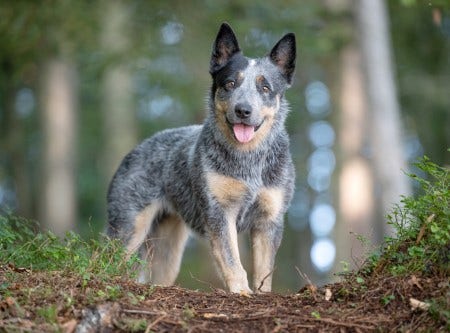
Are You Ready to Adopt an Australian Cattle Dog?
To adopt an Australian Cattle Dog, start by making sure this type of dog will fit your lifestyle. Use our pet adoption checklist to walk through each step in the adoption process. Complete the necessary adoption applications and be prepared for interviews or home visits. Spend time with potential dogs to find a good match. Finally, prepare your home for the new pet, ensuring it's safe and welcoming.
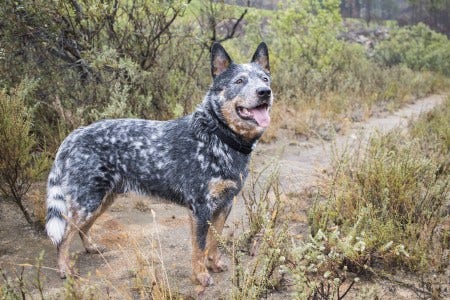
Pet Insurance Options for Australian Cattle Dogs
Pet insurance for an Australian Cattle Dog may help cover costs for conditions like hip dysplasia and cataract surgery. Consider a policy that includes hereditary and congenital conditions, flexible coverage options, and reasonable premiums.
Use our insurance aggregator tool to compare providers and find the best plan for your dog's unique needs.
What Are the Physical Characteristics of an Australian Cattle Dog?
Australian Cattle Dog Facts
Other Breeds to Explore
References
- Morris, Desmond. Dogs: The Ultimate Dictionary of Over 1,000 Dog Breeds. Trafalgar Square, 2002.
- American Kennel Club. The Complete Dog Book. Random House Digital, Inc., 2006.
- Wilcox, Bonnie and Chris Walkowicz. The Atlas of Dog Breeds of the World. T.F.H Publications, Inc., 1995.
- Australian Cattle Dog Dog Breed Information. American Kennel Club, 2020.
- AIS/PennHIP FAQ. ANTECH Imaging Services, 2016.
- What is Canine Hip Dysplasia?. Orthopedic Foundation for Animals. 2020

